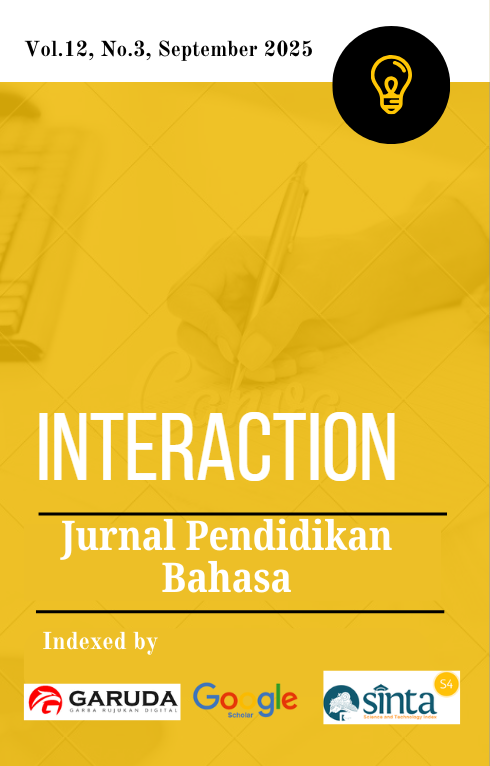Exploring Learners’ Experiences with Tactile and Interactive Materials in Mandarin Language Learning for Visually Impaired Students
DOI:
https://doi.org/10.36232/interactionjournal.v12i3.4071Keywords:
Visually Impaired Students, Mandarin Language Learning, Tactile Materials, Inclusive EducationAbstract
Visually impaired students continue to encounter persistent barriers in foreign language learning because instructional practices often rely heavily on visual input, which limits their motivation and equitable participation in the learning process. This study addressed this gap by exploring whether multisensory Mandarin lessons could enhance engagement and motivation among visually impaired learners. A qualitative descriptive design was applied with 24 students at SLB A YAPTI Makassar. Data were collected through participant observation, semi-structured interviews, and a motivation questionnaire, then analysed thematically using Braun and Clarke's framework with triangulation to ensure credibility. The findings revealed three major outcomes: students expressed heightened interest and enjoyment, describing the lessons as novel and stimulating; they reported an increased sense of competence and confidence, though many requested slower pacing and more practice to master tonal distinctions; and they showed greater participation and peer interaction, fostering a more inclusive classroom environment. These results highlight the potential of multisensory approaches to reduce barriers in foreign language education, emphasising the need for teachers and policymakers to design adaptive strategies that support both accessibility and sustained motivation for visually impaired learners.








